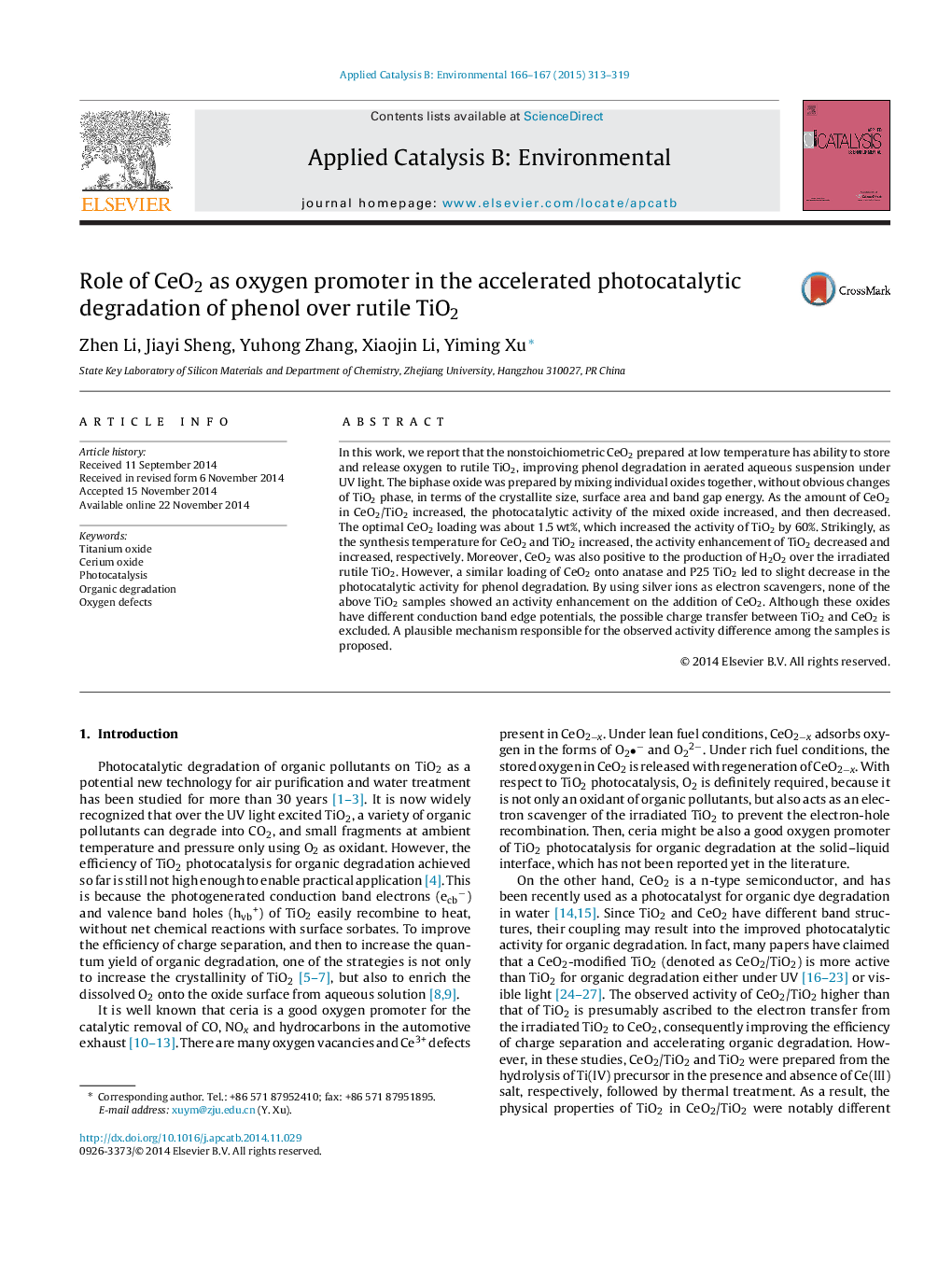| کد مقاله | کد نشریه | سال انتشار | مقاله انگلیسی | نسخه تمام متن |
|---|---|---|---|---|
| 45724 | 46421 | 2015 | 7 صفحه PDF | دانلود رایگان |

• Sample was prepared by a simple mixing of rutile with 1.5% CeO2, without notable change of TiO2 physical parameters.
• CeO2 loaded rutile is more active than bare rutile for phenol degradation in aerated aqueous solution under UV light.
• This activity enhancement increases and decreases with the synthesis temperature of CeO2 and rutile, respectively.
• The nonstoichiometric CeO2 can store and release O2 to rutile accelerating phenol degradation.
In this work, we report that the nonstoichiometric CeO2 prepared at low temperature has ability to store and release oxygen to rutile TiO2, improving phenol degradation in aerated aqueous suspension under UV light. The biphase oxide was prepared by mixing individual oxides together, without obvious changes of TiO2 phase, in terms of the crystallite size, surface area and band gap energy. As the amount of CeO2 in CeO2/TiO2 increased, the photocatalytic activity of the mixed oxide increased, and then decreased. The optimal CeO2 loading was about 1.5 wt%, which increased the activity of TiO2 by 60%. Strikingly, as the synthesis temperature for CeO2 and TiO2 increased, the activity enhancement of TiO2 decreased and increased, respectively. Moreover, CeO2 was also positive to the production of H2O2 over the irradiated rutile TiO2. However, a similar loading of CeO2 onto anatase and P25 TiO2 led to slight decrease in the photocatalytic activity for phenol degradation. By using silver ions as electron scavengers, none of the above TiO2 samples showed an activity enhancement on the addition of CeO2. Although these oxides have different conduction band edge potentials, the possible charge transfer between TiO2 and CeO2 is excluded. A plausible mechanism responsible for the observed activity difference among the samples is proposed.
Figure optionsDownload as PowerPoint slide
Journal: Applied Catalysis B: Environmental - Volumes 166–167, May 2015, Pages 313–319